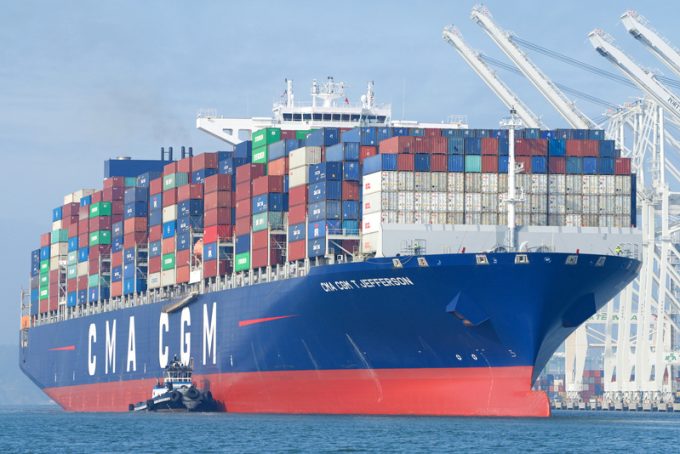Seko Logistics appoints Ursula Wallace to head up North America ocean freight
Seko Logistics has appointed veteran forwarder Ursula Wallace (above) to head its ocean product, North ...

CMA CGM saw group revenue contract 43% in the third quarter, compared with the same period of last year, resulting in net income plunging to $388m, contrasting with the huge $7bn profit posted for Q3 22.
“The industry continued to normalise in the third quarter, with a return to pre-pandemic market conditions,” said chairman and CEO Rodolphe Saadé.
“The slowdown in the global economy is expected to continue weighing on our industry in the period ahead,” said Mr Saadé, adding that the group remained “committed to controlling our operating costs”.
Turnover was $11.4bn, down from $19.9bn the year before, for an ebitda of $2bn, versus $9.1bn previously, including $7.6bn of revenue contributed by its liner shipping activities.
Volumes carried on its liner network increased by just 0.9% – compared with ONE’s 6.5% growth, Maersk’s 5% and Hapag-Lloyd’s 4.5% – to 5.7m teu, for an average rate of $1,323 per teu.
This is in keeping with Hapag-Lloyd’s average of $1,312 per teu, but better than ONE’s $1,150 and Maersk’s $1,047 for the period.
“Volumes continued to grow on north-south and shortsea lines, while further normalising on east-west lines, due to inventory drawdowns in the US and more moderate household consumption in an inflationary environment,” said CMA CGM.
“New capacity expected on the market in 2024 will likely continue to pull down freight rates,” the French carrier said in its outlook.
According to Alphaliner data, CMA CGM operates a fleet of 613 vessels with a capacity of 3.5m teu; it has a huge orderbook, of 116 ships with a nominal capacity of 1.2m teu, and is likely to usurp Maersk as the world’s second-largest container carrier in terms of capacity some time in 2024-2025.
Meanwhile, ebitda from CMA CGM’s expanding logistics sector decreased 3% year on year, to $348m. It said the “stability of the logistics business” reflected “the strengthening of the service offering and the resilience of certain activities”.
It added: “Finished vehicle logistics activities continued to perform well, supported by favourable market dynamics attributable to sustained demand, with supply chains returning to normal.”
Meanwhile, South Korean carrier HMM managed to stay in the black in Q3, but recorded a 96% drop in net profit, to $72m, and said it would focus on cost-cutting measures.
“Container demand is expected to be under downward pressure, with no encouraging sign of restoring desire for consumption,” it said.
However, Taiwan’s THE Alliance member Yang Ming bucked the trend of declining carrier profitability, returning to the black in Q3 after a $4m net loss in Q2. It posted a $91m net profit for the period, despite seeing revenue fall as a consequence of lower freight rates, suggesting it had succeeded in taking out costs.
Nevertheless, Yang Ming joined its peers in painting a grim picture of the liner industry next year. It said: “A significant gap between supply and demand growth rates will remain.”
Comment on this article